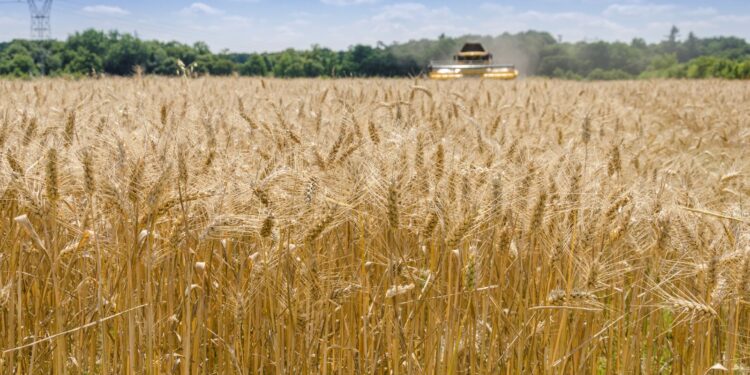Wheat fields. Credit: INRAE—Eric Beaumont Yield, dietary nutrition and income benefits of rotational systems compared to monoculture systems in major agricultural production regions of the world.
An international study involving INRAE and coordinated by the China Agricultural University showed that the practice of crop rotation outperforms continuous monoculture in terms of yield, nutritional quality and agricultural income. The results, based on more than 3,600 field observations from 738 experimental trials across six continents, were published in Natural communications.
Although crop rotation is widely practiced in Europe, particularly to control crop pests, diseases and invasive weeds, monocultures still dominate in Africa and South Asia. Elsewhere, continuous monocultures may still be popular, particularly soybean monocultures in regions like South America, where market demand for this agricultural commodity is strong.
To support the transition of agricultural systems on a global scale, it is therefore essential to quantify the costs and benefits of crop rotations compared to monocultures, taking into account the particular characteristics of each of the world’s major agricultural regions. Despite the availability of numerous experimental data, no comprehensive synthetic and multi-criteria study of the impact of crop rotation has been carried out until now.
In this context, INRAE worked as part of an international team, coordinated by the China Agricultural University in Beijing, to collect and analyze a dataset of 3663 matched field trial observations drawn from 738 experiments between 1980 and 2024. Their goal was to quantify the impacts of crop rotation in three critical dimensions: yield performance (taking into account averages and variability), nutritional production (energy food, proteins and micronutrients) and agricultural income.
Revenue increases by 20% with rotation
This multi-criteria meta-analysis demonstrated that by considering the entire rotation sequence and taking into account all crop combinations, the practice of rotation increases total yields by 20% compared to that of continuous monoculture. The yield gain is a little greater when crop diversification includes legumes (such as peas, beans, clover, alfalfa) compared to a diet without legumes (+23% versus +16%).
The results also indicate less year-to-year yield variability in crop rotations compared to monocultures. Regarding nutritional value, the results show that the energy and protein content of the food produced is 24% and 14% higher, respectively, for crop rotations. Additionally, crop rotation increases the content of micronutrients such as iron (Fe), magnesium (Mg) and zinc (Zn) by 27%, 17% and 17% respectively. Finally, the data show a 20% increase, under controlled experimental conditions, in agricultural income for rotations compared to monocultures.
The study makes it possible to select specific crops for rotation according to the production contexts of the different major global agricultural regions. In Argentina and Brazil, soy-corn rotation can increase calorie content by 118%, nutritional quality by 191%, and income by 189% compared to continuous soybean monoculture. In West and Southern Africa, these gains are respectively 94%, 91% and 89% for a sorghum-maize rotation compared to a continuous maize monoculture.
These results highlight the importance and benefits of crop rotation for the sustainability of agricultural systems. They also highlight the need to improve our understanding of existing barriers (agricultural practices, supply chain and market structure, etc.) to the adoption of the practice of crop rotation in certain regions of the world.
More information:
Shingirai Mudare et al, Crop rotations synergize yield, nutrition and income: a meta-analysis, Natural communications (2025). DOI: 10.1038/s41467-025-64567-9
Quote: Crop rotation achieves higher yields, better nutrition and increased agricultural income on six continents, according to a study (November 7, 2025) retrieved November 7, 2025 from
This document is subject to copyright. Except for fair use for private study or research purposes, no part may be reproduced without written permission. The content is provided for informational purposes only.


